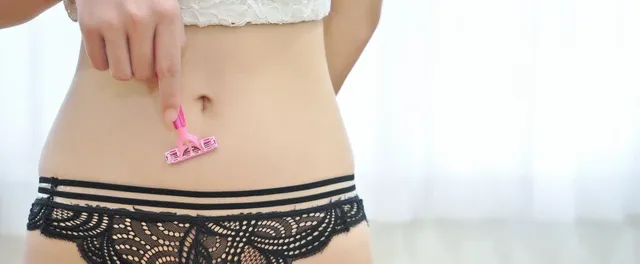
All Your Questions About Vellus Hair, aka Peach Fuzz — Answered
Vellus hair tends to be finer, thinner hair than what you see on the rest of your body.
It is often referred to as peach fuzz because vellus hair sometimes can look like the fuzz on the fruit.
Here's what else you should know about vellus hair, including what it is and how to remove it.
With the warmer months often comes an increased awareness of body hair. While not everyone is a fan of removing said body hair, if you are, your hair-removal routine may restart with a vengeance as turtlenecks and boots are swapped for shorts and sandals. If you are someone who likes to be completely hair free, there is a certain category of body hair you might be wondering how to remove: vellus hair.
"Vellus hair is a fancy term for peach fuzz," board-certified advanced aesthetics nurse practitioner and founder of Effacè Aesthetics, Roberta Moradfar, tells POPSUGAR. "These are the fine, very light-pigmented hairs that can be found all over the body including the face, ears, and nose. On certain areas of the body, hormonal changes may turn vellus hairs to thick, coarse hairs – for example the pubic area and armpits."
If removing your peach fuzz feels like a herculean task for you, we asked Moradfar and board-certified dermatologist Rachel Maiman, MD to explain everything you should know about vellus hair, including tips for proper removal.
What Is the Function of Vellus Hair?
Though this type of body hair is small, it actually serves an important purpose. "The primary role of vellus hair is thermoregulation, also known as the regulation of body temperature," Dr. Maiman tells POPSUGAR. "Basically, the vellus hair functions like a wick for sweat. While a skin pore is open, as occurs when the body temperature rises, sweat wets a strand of vellus hair and the sweat located on the external part of the strand evaporates."
These hairs also serve a more tactile function. "Alongside thermoregulation, vellus Hairs produce the sensation of goosebumps," Moradfar tells POPSUGAR. "This is what lets you know if there's something crawling on your skin."
What Causes Vellus Hairs to Grow?
Vellus hairs are actually hairs that you had as a child and are the starting point for the body hair that you may be more familiar with today. "Vellus hair replaces the characteristic hair noted in utero (called lanugo hair) on a human fetus at 36 to 40 weeks of gestation," Dr. Maiman says. "At puberty, hormones cause much of the vellus hair to turn into terminal hair and stimulate the growth of new hair in the armpit and the pubic area. In some people, this change in vellus hair also occurs on the face, giving them a beard, and the body."
It's worth noting that while these hairs are generally harmless, an overproduction of vellus hairs may indicate a larger issue. "A change in overproduction of vellus hairs can signify disease," Moradfar says. "Individuals with certain conditions such as anorexia may see an increase in the production of vellus hairs, and changes in adrenal glands can also cause an overproduction of vellus hairs as well, which is common with patients with Cushing's syndrome."
If you find yourself trying to get rid of vellus hairs more often, you may want to schedule a doctors appointment to make sure there are no underlying conditions of concern.